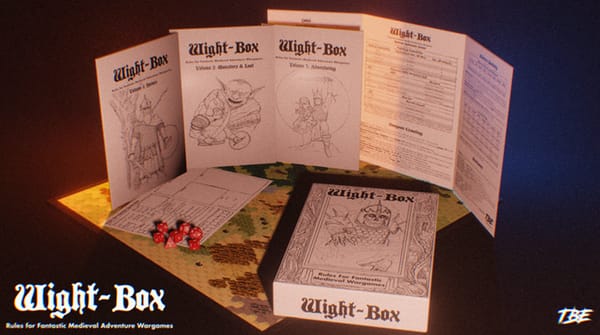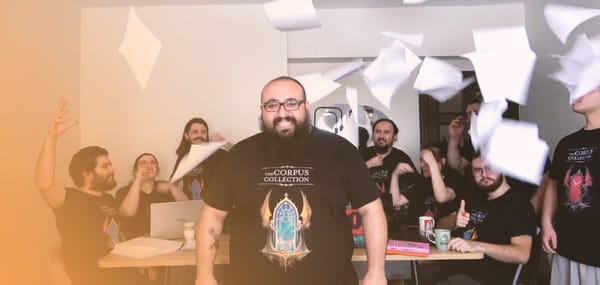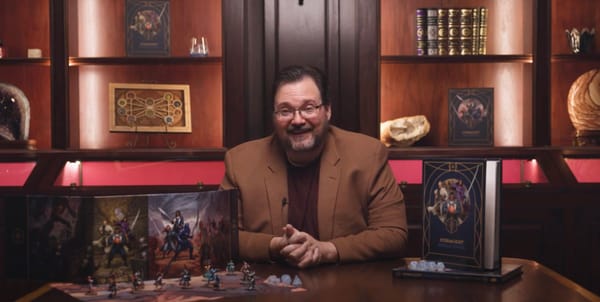What 70 Campaigns Taught Zac About Making TTRPGs That Backers Love
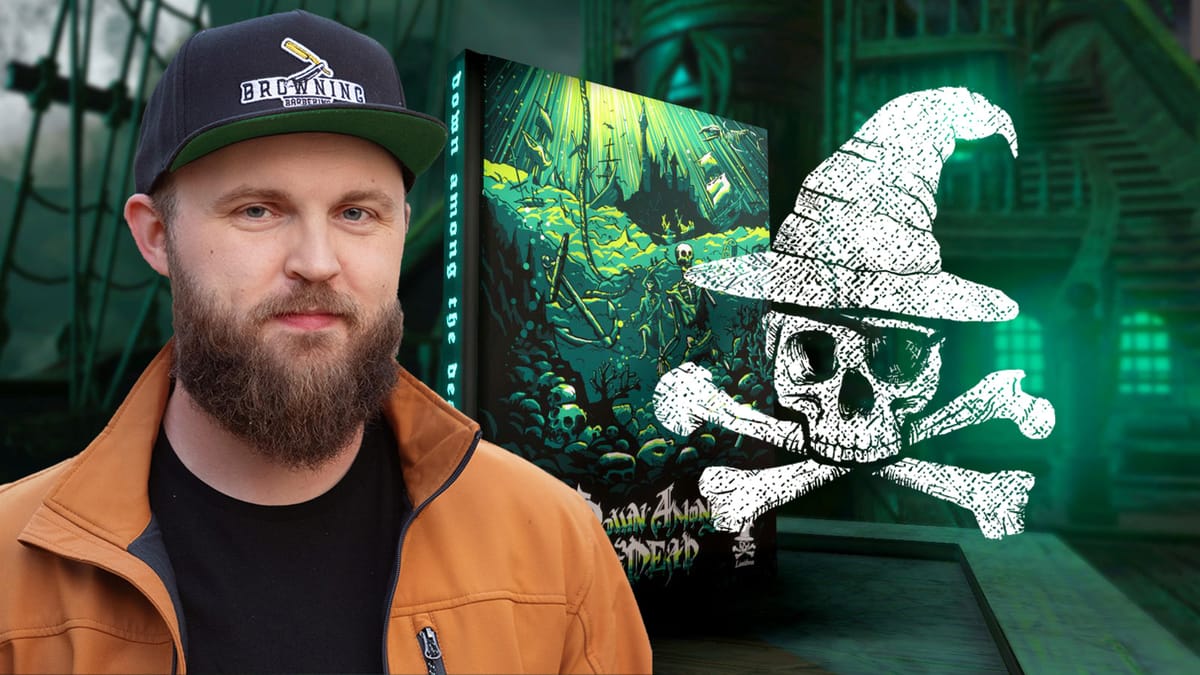
When opportunity meets timing, magic can happen—and for Zac, joining Limithron as Marketing Director was exactly that. After crossing paths with founder Luke at GenCon 2023, Zac brought years of crowdfunding expertise and a deep love for the MÖRK BORG community to a studio known for its bold creative vision.
Since then, he’s been steering campaigns like Down Among the Dead with a sharp focus on tested marketing strategies, community engagement, and avoiding common crowdfunding pitfalls.
In this conversation, Zac shares the lessons he’s learned from managing more than 60 campaigns, the marketing channels that truly move the needle, and his candid take on what it takes to thrive in today’s golden age of TTRPGs.
Onwards!
How did your collaboration with Limithron begin? When and how were you convinced to take on the role of Marketing Director?
I did a panel called "Basics of Small Press Publishing" with Luke (owner of Limithron) at GenCon 2023, and both Luke, Tyler, and I had been in some of the same designer and convention circles for a bit.
When I left my previous position, Luke was the first person to reach out. It was just serendipity that they needed help with marketing and gearing up for the Down Among the Dead Kickstarter at exactly the same time as I became available.
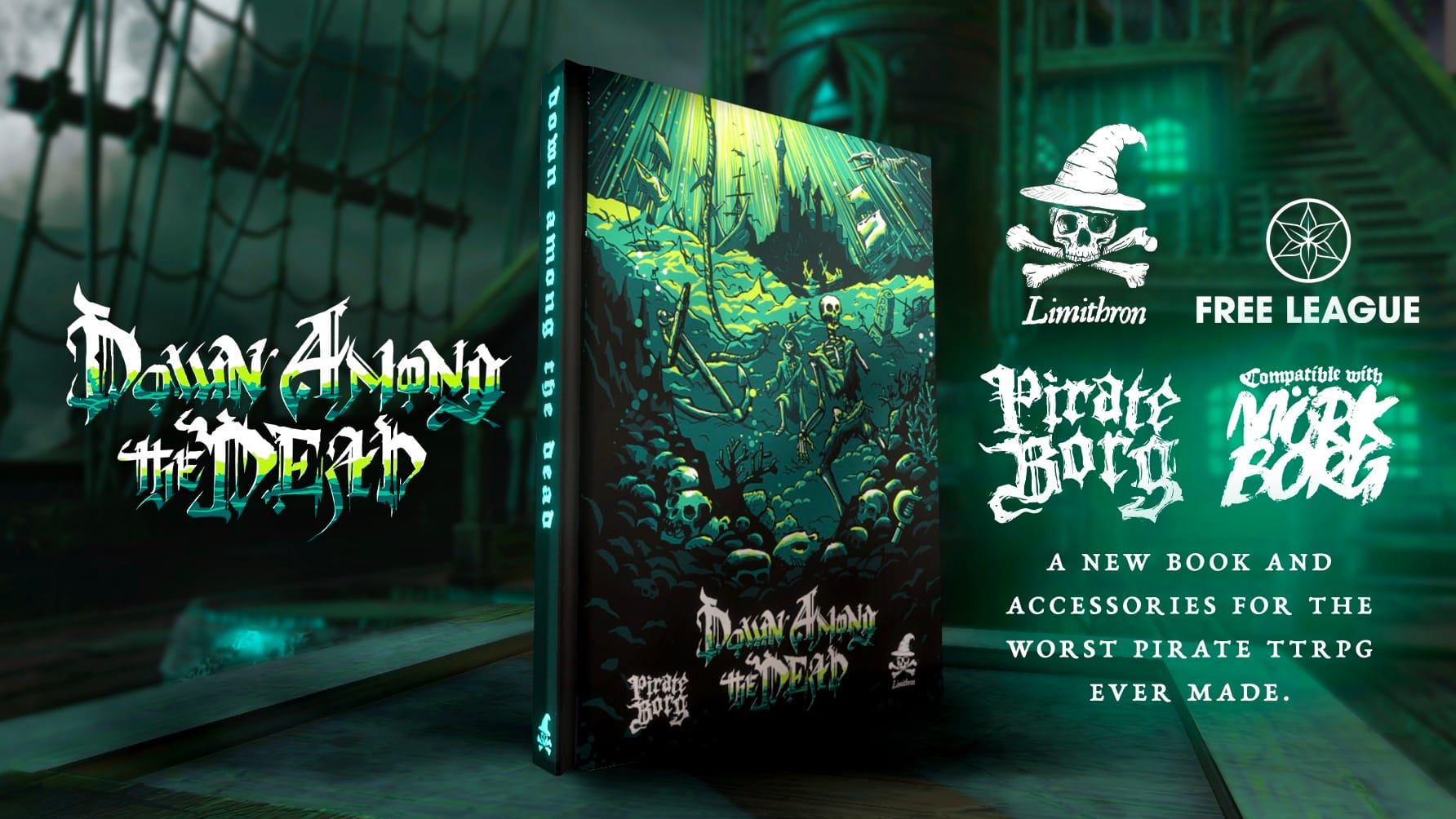
The MÖRK BORG space has long been one of my favorite community hubs, and I knew I liked the Limithron team, so it was a quick and easy leap. There were a few other offers on the table, but I liked Luke's vision for where the company was headed, I liked how he approached projects and design, and (selfishly) I was really attracted to the idea of working on only a few projects at once.
Before Limithron, I was usually managing a few dozen clients at a time. That said, it's a big leap to go from designer and crowdfunding consultant to Marketing Director. There's been a lot of rebuilding fundamentals and filling in knowledge gaps.
Do you remember your first crowdfunding campaign? What was it, and how did it turn out?
Yeah! It was at the end of 2019. Funny enough, Luke and I had very similar starting points in that we both were inspired to make something based on the lackluster bits of Ghosts of the Saltmarsh by WotC.
Luke turned his frustration into a better set of naval combat rules and the Limithron Patreon, while I took my own and made an aquatic D&D supplement called Oceanic Depths.
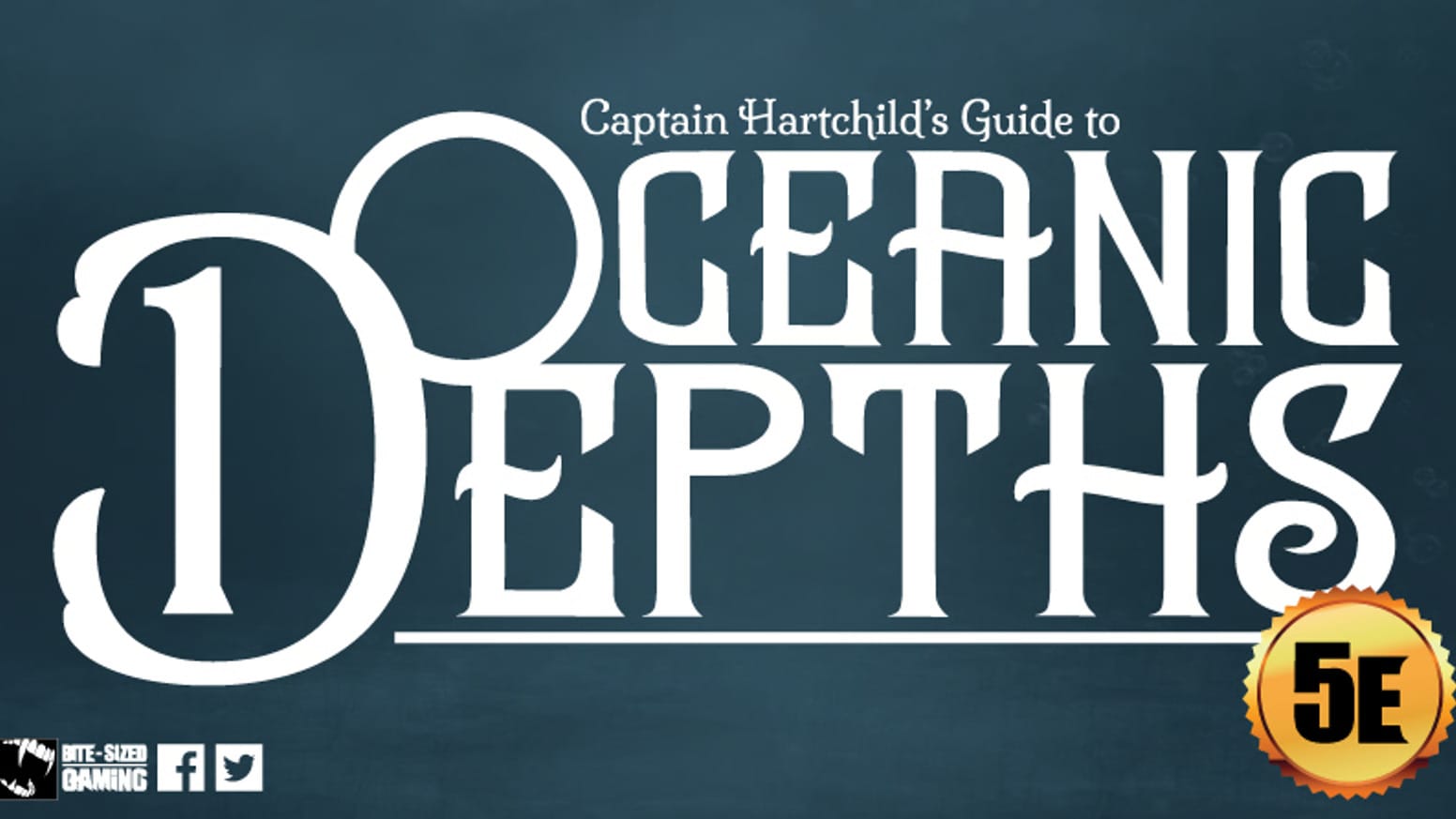
It was a 112-page, softcover, B&W book that my friends and I collaborated on. The entire thing was laid out in Adobe Illustrator(!) and printed at a local shop that had to drive the covers 2 hours away to another printer in order to do the lamination.
We fulfilled that project, about the same time my wife and I moved, so I took the opportunity to quit my job and dive into game design full-time. One of the things I'm most proud of is that even that first project came in on budget and almost exactly when we estimated it would.
Which marketing channels do you currently consider the most effective for crowdfunding campaigns? And which platforms would you recommend, and why?
Limithron has a solid email list (about 20k individuals), a strong Discord and Facebook Group community, a Patreon, and a tight connection with several influential people in the TTRPG community.
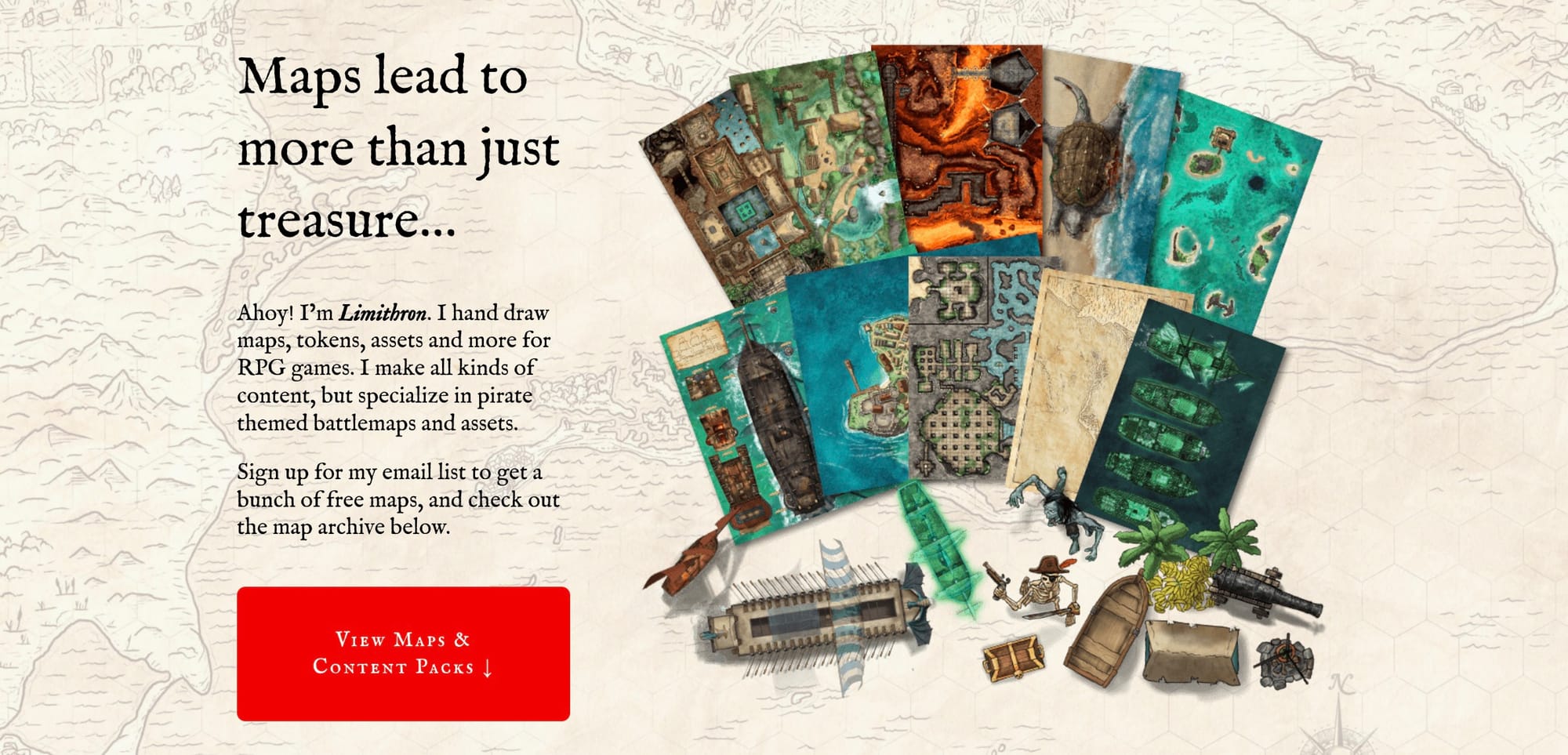
We also rely heavily on Meta Ads and worked alongside Backerkit Ads and Launchboom for our last campaign. All of those provided tremendous value during the campaign. Maybe I'll take this in a slightly different direction...Here are the channels that I think everyone can and should utilize:
- Email Lists. If you don't have one, put out a few solid digital products for free and promote them where you can. Ideally, put it up on DriveThruRPG, but anywhere is fine as long as you're capturing an email with every download. Building a good email list will take time, but even a couple hundred is better than none.
- Meta Ads. If you have any marketing budget at all, I'd throw it at Meta. There are a couple videos Backerkit put out years ago that I felt were really helpful for new creators. I'd also recommend Launchboom's book "Crowdfunded" by Mark Pecota.
- Industry Peers. Only the ones with whom you've cultivated a genuine friendship. Reaching out to them and having them promote your thing on their platforms is the cheapest/best thing you can do. It'll take time to make these connections, but just go hang out in their Discords or YouTube channels, be supportive, share their stuff, ask them for advice from time to time, go to shows and meet face-to-face. It's a pretty friendly space. Without exception, I believe every project I've ever personally launched has seen a nice bump in funding from this alone.
And here are two channels I would suggest avoiding:
- Posts on Social Media. It's not that it won't have any value, but it's so likely to become a time sink. I remember back in the day posting a link to my Kickstarter in a few dozen Facebook groups, Reddit threads, and shouting into the void on Twitter. While those things might give you a little bump, they are unlikely to move the needle, and instead, you're going to often find that you spent 4 hours making $40. Only do this sort of thing if you've exhausted every other avenue and there's nothing about the project that you could be working on elsewhere.
- Influencers. Unless they are true believers in your project, and their audience is practically a 1:1 with your target audience. I've tested using bloggers, streamers, YouTubers, and everyone else frequently. It works sometimes, but almost always the money you spent getting an influencer would make your more cash dumped into ads.
On the flip side, one or two people who meet these qualifications can do incredible things for your campaign. They won't make a lackluster campaign into a homerun, but they could be 5-10% of your sales.
What does the marketing for a perfect crowdfunding campaign look like in your opinion? Let’s say we’re talking about a TTRPG product—a rulebook for a brand-new original RPG system. When should the marketing start, and how much should be spent at each stage?
A decent rule of thumb is that you should spend about 10% of what you want your project to make. So if you want $200k, you need to spend $20k. Your mileage may vary.
Small projects don't necessarily need to spend $1k to make $10k, for example.Let's go with your rulebook example, and let's say you need $30,000 to make this book happen.
Let's say you have $3,000 to throw at marketing. Here's how I'd spend it:
- $750: Book Cover. You'll use this as your banner image on your crowdfunding page and of course for mock-ups of the book itself. This is literally the most important thing you can do with your budget. Get a great-looking cover, the best you can afford. It'll make all your other marketing efforts so much easier.
- $250: Meta Ad Tests. Run two tests on Meta, each should be about $10 a day for around 10 days. The first test should be using your book cover and be the best possible graphics you can put together with 5+ variations on the ad copy around it. After those 10 days, you should have a good idea on which ad copy set(s) outshine the others. On test two, you take your best performing ad copy and now do 5+ meaningfully different variations on graphics. Run that for 10 days. If you're happy with how cheap your Cost Per Click is after that, you're good to go. If not, do another round or two of testing until you are.
- $1,000: Pre-Launch Meta Ads. Building on your tests, run your best ad sets to drive people to your campaign's landing page and get people following your project.
- $250: First 48-Hours Meta Ads. Building on what you learned from your tests, build an updated ad set that's all about being LIVE NOW. Spend this money in the first 48 hours of your campaign going live.
- $500: Mid Campaign Meta Ads. Continue honing your ad set with about $15 a day in spend.
- $250: Final 48-Hour Meta Ads. Calling out ENDING SOON and FINAL 48.
Could you walk us through a typical campaign promotion timeline—what happens before, during, and after the launch?
It all depends on the size of your campaign. My above example doesn't include an email funnel, which you can do through Backerkit Launch or a similar build.In short though, I find the lion's share of the promotion timeline is pre-launch.
I like to start promotion around 90 days before we're looking to go live. Anything less than 60 days and you're rushing. Anything more than 120 days and your followers are going stale.
Do you use paid ads (e.g., Meta Ads, Google, Backerkit)? What’s your take on their effectiveness?
We love Meta Ads. For most people, Meta will do better than Google, Reddit, or any other space. Unless your marketing budget is well above $25k, I would completely ignore everything else.
As for Backerkit, they're just doing Meta/Google themselves. From my experience, if you're good at building ads and have the time, you'll probably outperform them. Use them as a pressure release valve for when you don't have the time to do it yourself.
How would you define the Limithron community—what makes it stand out?I think people like having a personal connection to the folks designing their games. Even before I joined the team, Luke and Tyler were extremely engaged in the social spaces we chose to inhabit. If you ask a question in our Discord or Facebook Group, you're going to see one or more of us answering quickly.
We also go to around a dozen conventions a year. Making sure we're accessible (as much as we can) is a big priority. Huge props to Tyler here. He goes above and beyond for people. We've also just got a cool player base. I think Pirate Borg inspires a certain type of enthusiastic play, and that bleeds over into the general vibes of the community.
What actions do you take to keep your community engaged between crowdfunding campaigns?
Going back to a few things above. We go to a lot of shows, we are available on Discord/Facebook, and we run a lot of games. We've got a West Marches-style collection of tables that we host in the Discord regularly that anyone can join, and our Harbourmaster GMs are coming out in force at conventions. We ran 173 games of Pirate Borg at Gen Con this year, as an example.

What does the content creation process at Limithron look like—from initial idea to finished product?
This is definitely more of a Luke question, but maybe that speaks to it. We're pitching ideas that excite us regularly, but those ideas have to get passed Luke and his vision. If and when that happens, we all rally around it. Usually, Luke handles the bulk of the creative; he and I will tackle scoping out production costs and coordinating with manufacturers, then I'll start putting together a marketing plan. Tyler is a second (or third) set of eyes on everything. We also use Trello, a project management platform, to keep everything on track and organized.
Do you research your audience’s needs before developing a new product? If so, how?
No. Maybe we should, but right now we make the things we're excited about and we trust that (a) our enthusiasm will be infectious, and (b) these are products that you're also naturally excited for.
What types of social media content work best for you? What generates the most engagement and traffic?
This is extremely volatile, but in general, it's videos and photos from our time spent working shows or running games for our friends. Candid shots that are still quality.
Alternatively, if you're talking about marketing a product, we find that big spreads of items in a single image usually drive the most clicks and traffic. Or if you're talking trailers/video, it's often the shorter the better, and a mood trailer will almost always trump an info trailer.
What role do influencers and reviewers play in your overall marketing strategy?
Great question. We did a ton of influencer/reviewer outreach for Down Among the Dead's crowdfunder. I think we connected and sent previews to a few dozen folks. I think we paid for promotions and previews on over a dozen channels.
I believe 3-4 of them made money, and every single one of those was already a friend of ours and a fan of the game. I think we'll take that lesson and become very selective with our purchased promotions in the future.
What does your typical workday look like as Limithron’s Marketing Director? What are your core responsibilities?
Every day's different. I might be deploying a new digital release across a bunch of different webstores, writing a Kickstarter update, jotting down ideas for some social posts, putting together a newsletter, helping a 3rd-party Pirate Borg creator figure out their project's budget, scheduling games at a convention, sending a graphics kit to a streamer who's prepping one of our modules, designing a new ad campaign's graphics, having a coffee with one of my marketing peers and swapping ideas, helping a backer change their pledge, or building out a new campaign in Meta. In general, though, I work from home, I manage our new releases and social channels, and I try to do my part to make Limithron a welcoming community.
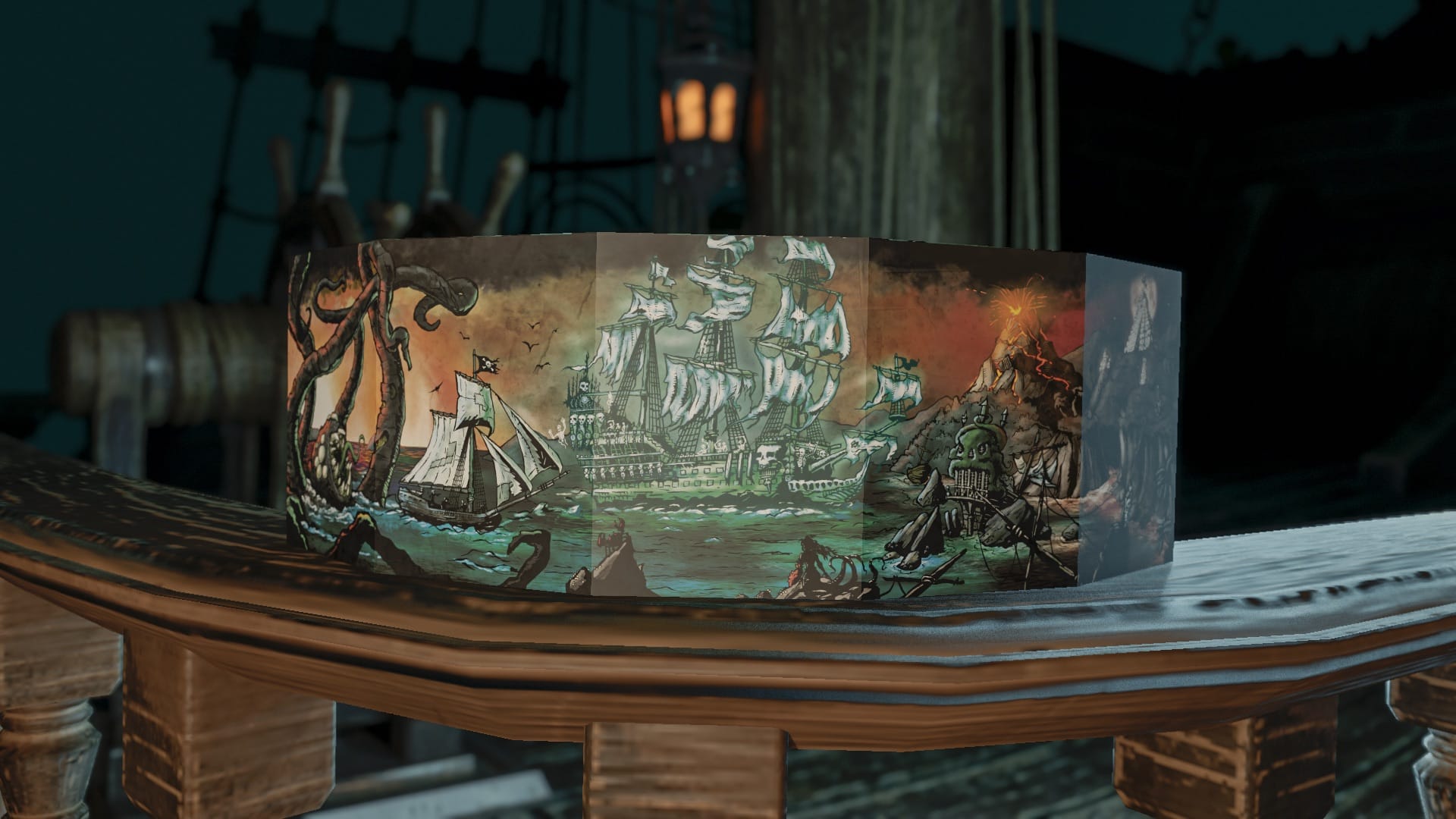
What key lessons have you learned from successful campaigns—and from those that had a rougher start?
Stepping outside Limithron for a minute, I believe I've managed about 65-70 crowdfunding campaigns in the last 6 years. I think I have a 96% funding rate. A big part of that comes down to building a good follower count pre-launch. The simple formula is to take your number of followers and divide by 4. If the resulting number of people backed your project in the first two days, would you fund? If the answer is no, delay your project.
I've definitely had a few rough ones in the past, and I think that's okay. I've had a few that I've cancelled after a few days. Sometimes you go with your gut and your own enthusiasm about a project, and then it turns out that the wider community doesn't share your enthusiasm for the idea...or you really dropped the ball on communicating that idea...or you totally priced yourself out of a community.
My strong suggestion there is to cancel as soon as you realize you're not going to fund in the first week, take a few weeks to ask people what you could have done better, and re-evaluate your budget, communication, and marketing, and then maybe try again. In 2/3 instances where I've cancelled a project, I've been able to relaunch 90 days later with a new approach and secure my funding quickly.
How do you use newsletters and email marketing to build a loyal customer base?
This is a space that we're in the middle of trying to improve. I don't think it's our strong suit, but at the moment, we do a monthly newsletter, Mailchimp funnels, and infrequent one-off announcement emails. It definitely helps, but it's also an area where we're looking to improve in the next year.
What are your plans when it comes to digital vs. physical products? How does marketing differ between the two formats?
Good question. I think the most dramatic part of that is on the digital VTT side. We take VTT support super seriously, and a big part of that is consistently releasing content for your community on those platforms.
Right now, we fully support Foundry VTT and Roll20, and Alchemy is supported to a lesser degree. We want it to be easy for you to play our game online.
Every time we release a battle map on Patreon, it's also built out with all the bells and whistles on Foundry, and all the variations have been uploaded to Roll20 within a week.
That might not feel like marketing at first blush, but just being consistent and quality in those spaces is regularly increasing our communities there.
What’s your opinion on the role of AI in creating marketing materials and TTRPG content? Are you already using AI at Limithron?
No, we don't use AI in marketing materials, art, or any other creative section of TTRPG content, and I don't see a world where we dive into AI at any point in the future. We're artists making art, and the moment we decide to hand off the art-making to an AI, we should probably just go do something else.
How do you assess the current state of the TTRPG market and its potential in the coming years?
We're in the golden years. There's never been a better time to be making games, and I'm completely grateful for every year this level of enthusiasm continues. I see a lot of "non-D&D" games rising in popularity right alongside D&D itself, and every bit of that makes me happy.
I think the biggest, largely untapped potential is in the crossover between TTRPGs and the video game space. That's an industry that's struggling to find an identity and connect with its players on a personal level.
On the flip side, it's got years and billions of dollars spent in marketing research to better understand what sort of game loops, character progressions, storypath structures, and combat mechanics people enjoy the most.
I'd love to see how a handful of killer TTRPG designers could use that data and enhance the tabletop experience.
What advice would you give to someone who wants to build their own brand in the RPG space from scratch?
Do it! Be supportive of other people's endeavors. Be transparent and collaborative. Ask questions. Do your research. Look for ways to push the ball up the hill every day.
The first contracted writing job I took in the industry paid $0.04 per word.
The first contracted marketing job I took paid almost nothing.
The first Patreon I did had 3 patrons for six months.
The first Kickstarter I did funded on the last day (never, never again).
But I appreciate all of those. You'll get better with each project, so don't get ahead of yourself. Start small and manageable, be a decent person, and I think you'll likely get there one day.


